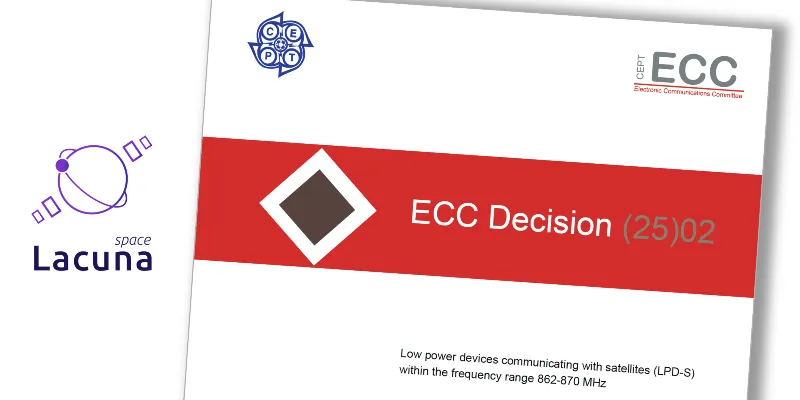A major regulatory milestone has been reached for satellite IoT in Europe: the European Electronic Communications Committee (ECC) has officially approved a new framework for Low Power Device-to-Satellite (LPD-S) communications. This decision marks a significant step forward for the direct-to-sensor satellite IoT sector.

What Is LPD-S?
The new LPD-S category defines the technical and regulatory conditions for low-power IoT devices to connect directly with satellites—without relying on terrestrial infrastructure. This framework enables non-terrestrial network (NTN) communications in the 862–870 MHz Short Range Device (SRD) band. It opens the door for ultra-low-power, battery-operated IoT sensors to achieve global coverage.
The approval is the result of a multi-year effort led by the LoRa Alliance, which advocated for a formal regulatory structure to support this emerging class of satellite-connected devices.
Lacuna Space Welcomes Europe-Wide Approval
One of the major proponents of LPD-S, Lacuna Space, has hailed the decision as a game-changer for the satellite IoT market. Based in Harwell, UK, Lacuna Space provides satellite connectivity specifically designed for IoT applications.

“We’re proud to have played a leading role in shaping this new LPD-S category,” said Rob Spurrett, CEO and co-founder of Lacuna Space. “After years of flight-testing and working with regulators, we’re excited to say it’s full-speed ahead for commercial-scale deployments across Europe.”
Rob spurrett
Lacuna plans to expand its service offerings using its KonflexHub platform, which includes starter kits and node subscriptions for IoT developers and integrators. The company’s satellites are equipped with its proprietary LoneWhisper payload—engineered to receive small, infrequent data messages from low-power devices and relay them directly to orbit.
Unlocking Global, Infrastructure-Free IoT
With the ECC’s formal recognition, Lacuna Space and other industry players now have the regulatory foundation needed to scale operations confidently.
“This recognition gives clarity to innovators, customers, and regulators alike,” Spurrett added. “It means customers can now deploy with confidence, knowing the foundation is in place for long-term, large-scale growth.”
The next ECC Working Group Frequency Management meeting is scheduled for October in Hungary, where further updates to satellite communications frameworks may be discussed.
Image credit: Lacuna Space — ECC Decision (25)02 cover authorizing low-power satellite communications in the 862–870 MHz frequency band under the new LPD-S category.